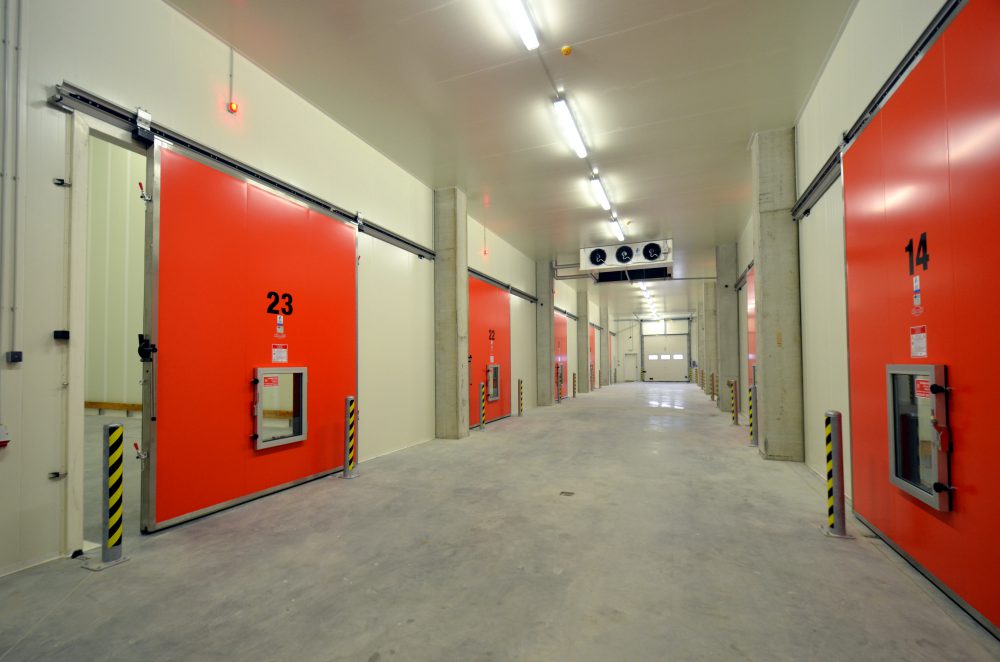Condensers are one of the most critical elements of a refrigeration system. While optimizing the performance of your condenser is important for reducing energy usage and maintenance costs, if you’re building a new facility, it all starts with selecting the best option for your needs.
Location
When choosing a condenser, it’s important to consider where the facility is located. In colder climates, ice buildup and water freezing may occur with evaporative condensers. To work around this issue, you have two options:
- Drain the water indoors (in the machine room) with a remote sump to prevent freezing
- Use an integral (internal) sump and basin with immersion heaters to keep water above freezing temperature
In more southern climates, facilities typically opt for the integral sump option because it doesn’t usually get cold enough for long enough to cause freezing. However, an owner may choose to install immersion heaters as an “insurance policy,” in case of prolonged cold spells.
Structural support vs. horsepower
Another consideration when deciding between a condenser with a remote sump or one with a basin and integral sump is your facility’s infrastructure.
A condenser with a remote sump requires more pump horsepower — and thus more energy — to pump the water up to the condenser on the roof. The concrete and drainage of the machine room must also withstand the weight of the indoor water tank, but this usually isn’t a problem.
By design, a condenser with a basin and integral sump stores the water within the unit, so you must account for that excess weight. It’s important to ensure that your roof is designed to sustain the operational weight of this condenser.
Condenser size
For a given refrigeration load, the size of a condenser depends upon:
- Discharge pressure of the refrigeration system
- Ambient conditions
The more humid a climate, the less a condenser can evaporate; therefore you need either more condenser surface area or an increase in discharge pressure the more humid it gets.
Forced draft vs. induced draft
There are two main types of condenser configurations based on where the unit’s fans are located:
- Forced draft — Fans located at the bottom of the unit blow air through the coil and exhaust out the top
- Induced draft — Fans located at the top of the unit suck air through the coil and exhaust out the top
The airflow is the same in both scenarios, but deciding which option to go with is mostly a maintenance consideration.
Forced draft units have several small fans mounted where you can easily access them on the roof. However, not only does having more total fans require greater horsepower, but it also means you have more parts to maintain.
Induced draft units have fewer fans (sometimes requiring less total horsepower), but they are harder to access and are significantly heavier. Plus, when one of these fans does fail, output decreases more dramatically, making speedy maintenance that much more important.
Given these variables, the best choice depends on a particular facility’s needs. At Stellar, we can assess a facility’s operations and provide a cost analysis, energy analysis and total life cycle cost before giving a recommendation.
Coil charge
If you’re looking for a low-charge solution, there are different coil technologies available to minimize coil surface area and ammonia charge to meet Process Safety Management (PSM) requirements. However, since this limits your coil area, you may need higher horsepower fans, which can increase operating costs. You could also see higher costs if you don’t optimize your head pressure, causing the condensers to work harder.
If you want a standard central refrigeration system to maximize efficiency, we can specify a larger coil with a larger refrigerant charge, which can save on energy costs by reducing your system pressures and motor operating costs. However, you are running a higher charge. In addition, more steel means more weight, and more weight requires a more robust infrastructure to support it.
Manage the variables by partnering with an expert
Refrigeration systems are complex, and there are numerous facets to selecting the right condenser. (We have even specified special materials to minimize corrosion for facilities located near the ocean.) A qualified and experienced refrigeration design partner can help juggle all these variables and determine the best solution for your particular situation.
If you have questions about condensers or your refrigeration needs, leave a comment below or email me at foodforthought@stellar.net



